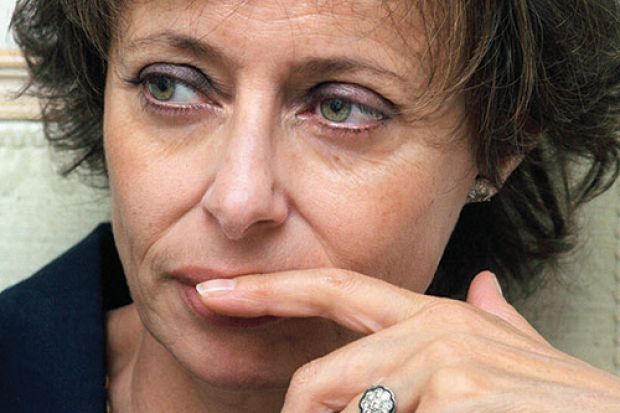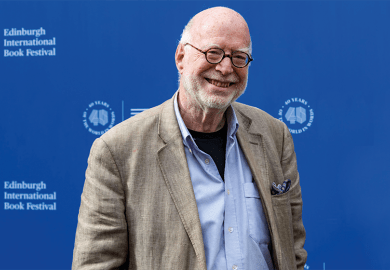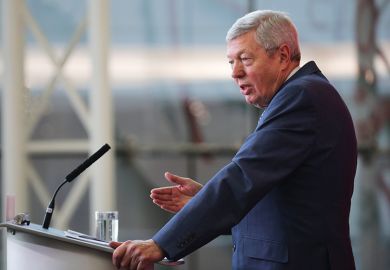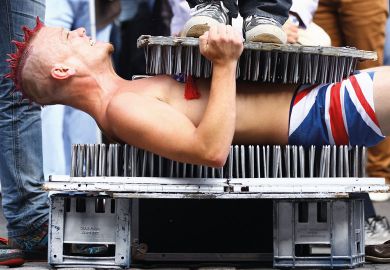From the sorrow wrought by prejudice to envy to malice, the strong emotions that coloured Mark Rothko’s life matched the depth and richness of his paintings. Annie Cohen-Solal’s engrossing biography follows “the difficult identity journey” of “the avant-garde painter [and] the avant-garde Jew”, re-examining his work in the historical contexts of both the pogroms in turn-of-the-century Russia and the golden age of capitalism in the US after the Second World War. In a valuable, detailed account of his life, as well as a vivid portrait of early 20th-century Europe and America, Cohen-Solal convincingly argues that migration and exile influenced Rothko’s pioneering abstract expressionist art.
He was born Marcus Rotkovitch in 1903 in Dvinsk in the Russian Empire (now Latvia’s second-largest city, Daugavpils), in the Pale of Settlement where some 5 million Jews were obliged to live. The youngest child of a German-speaking Jewish mother and a Lithuanian Jewish pharmacist father, he spent his early years as a Talmud Torah scholar. Jews were conscripted into the Russian army, and as Rotkovitch’s two elder brothers neared conscription age, their father decided to move the family to America. He went first in 1910, followed by the two young men, who crossed borders concealed in a sledge. In 1913, 10-year-old Marcus, his mother and sister set out to join them in Portland, Oregon. Upon arrival in New York, they were given tags to wear that read: “I do not speak English.”
By 1920, more than 2 million Jews fleeing Russia had entered Ellis Island’s “golden door” to the US. Although Cohen-Solal’s meticulous research reveals warm community support for newly arrived immigrants, the Rotkovitchs lived in the poorer part of town, in marked contrast to their previous life. Marcus’ father died not long after their arrival, and the boy soon shed his religious orthodoxy. At high school, indignant that Jewish pupils were excluded from the debating society, he wrote angry polemics for the school magazine. With no early training in art, he looked set instead for a career as a writer. Cohen-Solal offers a vivid picture of Marcus as a newspaper boy, standing on street corners shouting headlines about his former homeland: “Rasputin Dead! Revolution in Russia!”
In the face of domestic opposition and rising xenophobia, the US entered the First World War in 1917. In 1921, Rotkovitch won a scholarship to Yale University, but he found himself doubly stigmatised as a “nebbish” Jew and a poor scholarship boy in an age when, as documents unearthed by Cohen-Solal show, the university’s authorities were expressing disquiet at the high number of Jewish students. Once again, Rotkovitch took to his pen, accusing Yale of valuing breeding over merit: “the whole institution is a lie and serves as a cloak of respectability for a social and athletic club”. Disillusioned, “wounded by discrimination”, he left without completing his degree, went to New York City and slept on relatives’ sofas, doing odd jobs. Even if his indignation seems understandable, he comes across as a rather pompous young man. Friends described him as pugnacious, inherently tormented, “an inveterate crusader”. “Nothing stimulated him more than a righteous fight”, recalled the art historian and curator Katharine Kuh.
Six months before Rotkovitch reached the US, the International Exhibition of Modern Art (known as the Armory Show) had introduced an astonished American public to avant-garde European artists including Marcel Duchamp and Georges Braque, drawing scandalised press coverage and unprecedented visitor numbers. Aged 23, Rotkovitch visited a friend at the Art Students League of New York and discovered that radical, misunderstood artists were outcasts he could identify with. He attended classes and became friends with young experimental artists including Barnett Newman, Jackson Pollock, Adolph Gottlieb, Robert Motherwell and Clyfford Still. He joined, argued with and left groups such as The Ten (which had nine members), The Artists’ Union and The Club, and fulminated against the art world’s system of privilege and prestige. Cohen-Solal’s account vividly evokes the swirls and eddies of friendship, support, rivalry and resentment in this milieu.
In 1938, Rotkovich became a US citizen; in 1940, he changed his name to Mark Rothko. As Nazi troops marched across Europe, Paris ceded its place at the centre of the art world and New York began its transformation into the world capital of Modernism, bolstered by refugee artists and curators from Europe, including Piet Mondrian, Josef Albers, André Breton, Peggy Guggenheim and Max Ernst.
As Cohen-Solal documents, Rothko’s developing career was inspired by Henri Matisse, Joan Miró and André Masson, and by encounters with Greek, Roman and Etruscan art on post-war trips to Europe. In 1948, he co-founded the Subjects of the Artist School, an informal, avowedly non-doctrinaire undertaking that, said one wry commentator, boasted five professors and five students. Rothko’s relationships with critics and patrons were often fraught, and his first commission ended in a costly, acrimonious lawsuit. He and Gottlieb wrote to The New York Times decrying the critical reception afforded contemporary art, and he was one of the artists dubbed “The Irascibles”, who attacked the Metropolitan Museum of Art for its lack of interest in “advanced” art. He refused to sell two works to the Whitney Museum of American Art because, he announced, he could not trust it to display them without distorting their meaning. Throughout his career, Rothko was particular about how his works were hung and lit, seeing them as immersive experiences for the viewer.
In 1958, he received a major commission for Mies van der Rohe’s new Seagram Building in Manhattan. Rothko’s work toured European cities and received a particularly warm reception in London, and he represented the US at the Venice Biennale. But he remained a polarising figure, and Cohen-Solal quotes from letters attacking his work, written around this time by his erstwhile friends, Still and Newman. Increasingly estranged from American capitalist values, Rothko considered buying a medieval chapel near St Ives in Cornwall to house his work. Convinced that the Seagram skyscraper’s noisy, exclusive restaurant was not the right context for his paintings, he pulled out of the commission, returned the advance, and negotiated with the Tate Gallery to install the murals there instead. John and Dominique de Menil commissioned him to create pieces for a chapel in Houston, and Rothko finished these powerful, dark paintings, his last major works, in 1967. Curator Peter Selz wrote of Rothko’s art: “These silent paintings with their enormous, beautiful, opaque surfaces…deal directly with human emotions, desires, relationships, for they are mirrors of our fantasies and serve as echoes of our experience.”
By 1968, Rothko’s health was declining, his heart disease exacerbated by heavy drinking and smoking, and in February 1970 he took his life. His children entered a 12-year legal battle with his estate’s executors and the Marlborough Gallery, who would be found guilty of a conflict of interest branded “manifestly wrong and indeed shocking” by the presiding judge.
Although James E. B. Breslin’s 1993 volume has long been considered the standard biography, Cohen-Solal has benefited from the appearance in 2006 of two previously unpublished sets of writings by Rothko himself, The Artist’s Reality: Philosophies of Art and Writings on Art, and she has drawn on material in the archives of the Whitechapel Gallery in London. Her book is both a moving tribute to a great artist and a gripping story. Its strength lies in placing Rothko in the contexts of a Europe devastated by wars and anti-Jewish violence, and America’s post-war cultural scene, and the light that Rothko’s life sheds on both these tumultuous eras.
Mark Rothko: Toward the Light in the Chapel
By Annie Cohen-Solal
Yale University Press, 296pp, £18.99
ISBN 9780300182040
Published 26 February 2015
The author
Until the age of 14, scholar and author Annie Cohen-Solal lived in Algiers, “a harbour city, with the constant call of the sirens when ships went in and out: it was beautiful. I was constantly reminded of movements, travels and crossings, and I am convinced that it deeply affected my childhood imagination. Many languages were spoken there – French, Berber, Arabic, Spanish, Greek, Italian, Judeo-Arabic – and I felt that my culture was a non-stop shuffling and reshuffling of world cultures. And, growing up during the Algerian war, it gave me a sense of the precariousness of all things.”
For the past four years, the peripatetic Cohen-Solal has lived mainly in Paris, “with regular visits to our place in Tuscany. It seems to me that after my early 14 years in Algiers, I have never remained for more than ten years in a row in the same city, constantly shuttling between cities, cultures, languages, situations; thus my intercultural twist, I guess. Algiers, Paris, Berlin, Jerusalem, New York; such are my cities.
“My son Archie, who graduated from Johns Hopkins University and just spent two years in Rwanda as a bilingual news commentator, is an expert in geopolitics and is going to start graduate school in the US, with an emphasis on global crisis resolution. My companion, Marc, is a statistical physicist, and he researches the uses of random movements between computer science, neurosciences and biology. For three years now, he has been the head of one of the most prestigious academic institutions in France. He is also a trained musician with a passion for literature. What we enjoy the most, though, are the regular trips to Cortona in Tuscany, where we cook, garden, trek, canoe, sail, ride.”
As a child, Cohen-Solal was “indeed studious, but not as ‘straight’ as my older sister, though. (She’s a politician, with the French Socialist party, and was deputy mayor of Paris for 14 years). I was anti-conformist, more rebellious, experimenting, testing boundaries, and I went through a ‘search for identity’ around the world that neither my older sister nor my younger brother ever seemed to need. My father, who was a medical doctor, an educator and an artist (violinist, sculptor, photographer) with a very outgoing personality, taught me how to benefit from the tensions between different occupations (research, teaching, political commitment and creation). He was also a politically-minded person and I have tried to behave as an intellectuelle engagée, with a global vision.”
In 1968, Cohen-Solal was an undergraduate in Paris; a genuine soixante-huitard, she confirms. “I attended Nanterre the year the revolution broke out. I was part of the Mouvement du 22 Mars with Dany Cohn-Bendit. We thought it was outrageous that the Gaullist government never prepared anything for us, the post-war baby boomers. We were sent to ugly places in ugly bidonvilles, in a society of older people, with no interest in the energies of the young. Everything which should have been fostered, supported or encouraged, was strictly forbidden: creativity, freedom, imagination.”
If she had the opportunity to change something about the French higher education system today, she would “suggest a general reshuffle of the system, to better fit the contemporary needs of the students. This means considering an adaptation of the agrégation and the grandes écoles to the challenges of the 21th century.”
Cohen-Solal has held academic posts in Israel, France, Germany and the US, and finds the respective academies “very different!” The latter two academies, she says, were those where she found it most congenial to be scholar.
“In Berlin, it was a very democratic system, in which teachers were encouraged to innovate, with meetings that brought students, professors and employees together, to respect and support each other. In the US, I liked the ‘porosity of borders between disciplines’ most, as well as the availability of the teachers.”
Does she believe Mark Rothko was his own worst enemy, as the saying goes?
“He was certainly very demanding, but the environment was not especially welcoming to him as a young scholar and a young immigrant, and he had to struggle constantly against the ethos of exclusion - in his Portland high school, at Yale, with the Metropolitan Museum, with the Whitney. He fought conformism, narrow-mindedness and exclusion, and he always kept fighting. He stood up for his ideas, for his demands as a young leader and as an older successful artist. The fact that in Seoul, The Hague, Washington, London and Houston, huge crowds are attending his shows or sitting in the Rothko rooms around the world certainly proves him right.”
She recently undertook a reading tour of the US for this book. What did those attending her lectures most want to know about Rothko? “Why is Rothko a pioneer? Why do his pictures move us today so much? How would he have reacted to the spiralling prices of his works? Such are some of the questions that are being asked on this tour. I answer as best as I can, explaining that the monetary value is one mark of legitimisation, but there is another marker, namely the attendance of the public [at exhibitions of his work], the emotion that his works provoke, the empowerment it gives to all publics alike.”
Asked why she believes Rothko’s paintings continue to hold such fascination in an impatient and digitally mediated age, Cohen-Solal responds, “Because they don’t translate well into photographs, Rothko’s paintings force the viewer to communicate with them in real life. Sitting in front of a Rothko picture forces your retina to adapt to the different levels, to the depth of the colours, and you do not leave unchanged. You have to concentrate, to interact with the painting, which in turn becomes a mirror of your own emotions.”
What gives her hope? “That Marcus Rothkowitz, the immigrant child from Dvinsk who at age 10 crossed the US on a three week journey in a dark suit, with a label around his neck saying ‘I don’t speak English’, that the young student who was forced out of Yale, became Mark Rothko, an artist, a pioneer, a transforming agent of US society,” Cohen-Solal responds. “This type of interwoven dynamic of migration, creation and societal innovation will be the focus of a five-year-long workshop at Stanford University (CASBS) co-organised with Jeremy Adelman on the theme ‘Crossing Boundaries’.
Karen Shook
Register to continue
Why register?
- Registration is free and only takes a moment
- Once registered, you can read 3 articles a month
- Sign up for our newsletter
Subscribe
Or subscribe for unlimited access to:
- Unlimited access to news, views, insights & reviews
- Digital editions
- Digital access to THE’s university and college rankings analysis
Already registered or a current subscriber? Login





